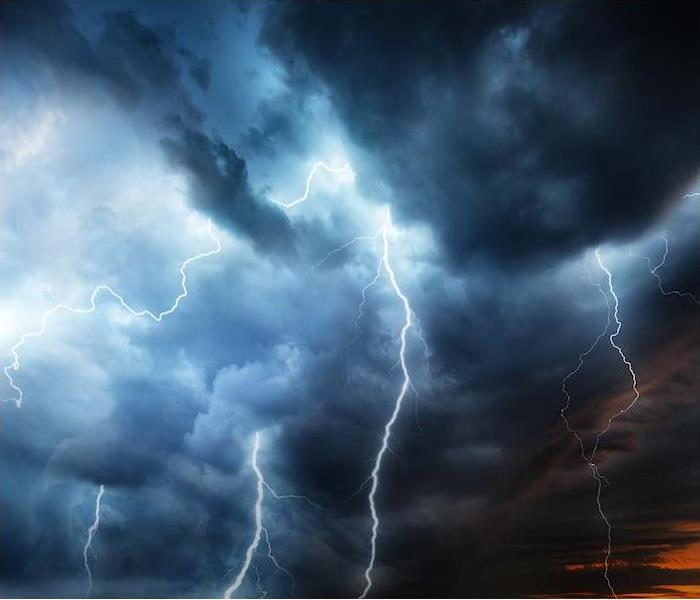What Makes up a Thunderstorm? | SERVPRO® of Washington County
5/31/2021 (Permalink)
 Thunderstorms can pop up at any moment. Contact SERVPRO of Washington County if you experience any damage.
Thunderstorms can pop up at any moment. Contact SERVPRO of Washington County if you experience any damage.
Thunderstorms are one of nature’s most common weather occurrences.
But what makes up a cell that we call a thunderstorm? And what is the difference between a thunderstorm and a “severe thunderstorm”?
Let’s take a look at these key elements of these storms and how to prepare for them.
The Components of Thunderstorms
Thunder. The rumble from the sky during a storm is exactly what defines a thunderstorm, but the phenomenon of what we call thunder is actually the result of a lightning strike, the sound coming from the rapid expansion of the air surrounding said lightning bolt. Therefore, a thunderstorm is a storm that has both thunder and lightning.
Lightning. As established previously, lightning is as essential to a thunderstorm as thunder itself. Lightning is one of the most dangerous elements of a thunderstorm, being responsible for hundreds of injuries each year and significant damage to homes and business due to fire and striking trees that can cause damage to these buildings.
The Components of a Severe Thunderstorm
Hail. A severe thunderstorm has hail that is at least one inch in diameter. Given that hail can fall as fast as 72 miles per hour, the amount of damage that can be done to just about anything it touches is vast. The destruction is not limited to property and people, as it can do damage to crops, livestock and pets.
High winds. Straight-line winds of up to 58 miles per hour is the other identifier of a severe thunderstorm. These winds can remove entire roofs off of houses, can topple mobile homes and can cause large limbs to fall from trees onto permanent structures and vehicles.
Flash flooding. Even if you are not in a flood-prone area, this is a threat that can appear at any time in any place. Drivers can have difficulty judging the depth of water on flooded roadways, but especially if driving at night, motor operators should use extreme caution in these incredibly dangerous circumstances.
While thunderstorms may pass through without doing much harm, there are other storms that can become a major cleanup mission. If you need help with damage from a recent thunderstorm, our team has the systems and techniques to help. Contact us to make it “Like it never happened.”






 24/7 Emergency Service
24/7 Emergency Service